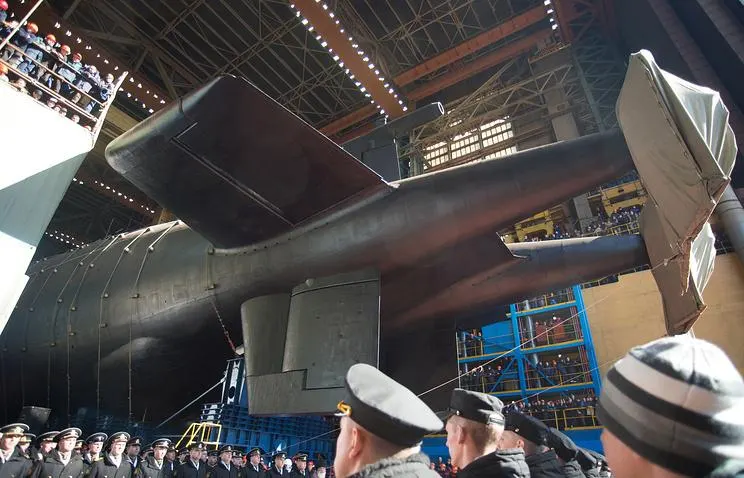Copyright Forbes

Russia has long been recognized for developing technologically advanced military systems, including drones, electronic warfare equipment, and hypersonic missiles. However, that reputation has been weakened by the Russia-Ukraine War, where many of these systems failed to perform as expected on the battlefield. In an effort to counter this perception, Moscow recently highlighted one of its most ambitious defense projects, with President Vladimir Putin announcing the successful testing of the Poseidon Unmanned Underwater Vehicle (UUV). Although the system is unrelated to the current conflict in Ukraine and the claims of the test have not been independently validated, the timing of the announcement appears deliberate. It serves as a reminder to the international community that Russia still views itself as a leader in advanced military technology. Inside the Poseidon: Russia’s Nuclear-Powered Underwater Weapon Over the past several years, the Poseidon UUV has been featured in Russia’s portfolio of advanced strategic weapons alongside its hypersonic arsenal. The system is substantially larger than most UUVs and torpedoes, with reports estimating it to be 20 meters long, 1.8 meters in diameter, and weighing about 110 tons. The Poseidon’s design and size are intended specifically to carry a 2-megaton nuclear warhead. Beyond its size, the Poseidon differs from traditional UUVs through its use of a miniature nuclear reactor for propulsion, which allows it to operate autonomously at ranges up to 10,000 km without needing to be refueled. Once the Poseidon is launched from a specialized submarine, it is designed to travel underwater for extended periods with minimal acoustic and thermal signatures, making detection difficult. Its stated purpose is as a second-strike weapon, where it delivers a nuclear warhead against an adversary’s coastal city following the outbreak of nuclear war. Its ability to operate deep underwater enables it to bypass most existing defense systems, which are primarily designed to counter missile-based threats. The development of the Poseidon has been lengthy and secretive, punctuated by occasional leaks and well-timed announcements. Formal development likely began around 2010, but the program first became public in 2015 when a Russian television broadcast inadvertently revealed a presentation slide describing an “oceanic multipurpose system” called Status-6. The slide detailed a nuclear-powered underwater vehicle designed to strike coastal targets, drawing global attention. In 2018, President Putin confirmed the system’s existence during an address on Russia’s new strategic weapons. Following that announcement, Russian defense officials reported continued progress aiming for the Poseidon to be fielded in 2027. MORE FOR YOU Due to its size, the Poseidon requires a specialized submarine for deployment and testing. The K-329 Belgorod, commissioned in 2022, serves this purpose and is among the largest submarines in the world. With the Belgorod complete, the Poseidon was ready for testing. In 2023, reports indicated that the first production batch of Poseidon UUVs was complete and that full-scale testing had begun. Last week’s announcement marks the latest stage in this effort, confirming a successful test. With that milestone achieved, large-scale production can follow, and the Poseidon may soon enter the Russian arsenal. Russia’s Eroding Reputation For Military Technology The Poseidon UUV represents only one part of Russia’s broader portfolio of advanced military technology. For decades, Russia positioned itself as a pioneer in modern warfare. Its military led in drone warfare, electronic warfare, and hypersonic weapons, areas that in many cases outpaced Western capabilities. Russia’s invasion of Crimea in 2014 is often cited as a textbook example of how to integrate drones into tactical operations, prompting many countries to adopt similar tactics and technologies. Meanwhile, Russian tanks, armored vehicles, and aircraft became ubiquitous, exported widely and used across the world, reinforcing Moscow’s image as a dominant supplier of advanced military systems. That image has eroded during the war in Ukraine. Russian tanks underperformed, with the T-90 series and other legacy armor suffering heavy losses during offensives, often to older systems. Russian aircraft have played little role in the conflict because of concerns about the effectiveness of Ukrainian air-defense systems. Meanwhile, Russia’s once-vaunted drone capabilities have been surpassed by Ukraine’s use of commercial drone technology and private-sector innovation. Even the hypersonic Kh-47M2 Kinzhal missile, long promoted as “unstoppable,” was intercepted by a U.S.-supplied Patriot system in May 2023. Beyond creating tactical setbacks, these battlefield failures have severely undermined Russia’s reputation for technological superiority. The Decline Of Russia’s Defense Exports Russia’s reputation for developing advanced technology is central to its foreign military sales, which have long been a cornerstone of the country’s defense industrial base. These sales provide both critical revenue and the production volume needed to sustain its extensive military infrastructure. Russia has traditionally maintained strong defense relationships with countries such as India, China, Algeria, and Vietnam. In 2021, before the start of the Russia-Ukraine War, Russia exported approximately USD 14.6 billion in military equipment. Russian foreign military exports have dropped by 93 percent since the start of the war. The downturn reflects not only Moscow’s prioritization of domestic military needs but also waning international demand caused by the poor performance of Russian systems in Ukraine. Some traditional partners, such as India, have begun expanding their own domestic defense production and seeking new military partnerships. Meanwhile, other nations, including Turkey and Iran, have entered the global defense market, particularly in drone technologies, undercutting Russia’s influence. As export orders decline, Russia’s defense industry continues to lose vital income, global market share, and the economies of scale that once supported innovation and modernization. Beyond its strategic role as a second-strike nuclear weapon, the Poseidon functions as a symbol meant to restore Russia’s image as a military technology leader. By showcasing a system that pushes the boundaries of undersea warfare through autonomous navigation, nuclear propulsion, and long-range endurance, Moscow is seeking to reassure potential buyers and allies that its defense sector remains capable of world-class innovation. Russia’s Renewed Focus On Deterrence The Poseidon’s successful test provides the Kremlin with a chance to reassert Russia’s position as a leader in advanced military technology, a key element of its long-standing approach to deterrence which relies on projecting an image of technological superiority. Since the Cold War, Moscow’s deterrence strategy has rested on the perception that it could field advanced and unconventional systems beyond the reach of Western defenses. That reputation suffered a major setback when Russia’s hypersonic missiles, once heralded as unstoppable, were intercepted in Ukraine. The Poseidon represents a potential means to restore that image of superiority and strengthen Russia’s deterrence posture. The timing of the announcement also carries a clear political message. It follows heightened tensions with the United States over possible deliveries of Tomahawk missiles to Ukraine, signaling that Russia retains formidable nuclear capabilities that extend beyond conventional missile defense systems. By publicizing the Poseidon test, Moscow seeks to remind both domestic and international audiences that it remains a major nuclear power and to counter perceptions of weakness stemming from its battlefield struggles. Ultimately, the unveiling of the Poseidon UUV is more than a technological milestone. It is a deliberate effort by Russia to restore its credibility as a developer of advanced military systems. The Poseidon reflects Moscow’s determination to maintain strategic parity with the West after battlefield setbacks and industrial limitations. Whether it transforms undersea warfare or remains largely symbolic, the Poseidon underscores Russia’s broader attempt to reassert its role as a leader in military technology and to reinforce its strategic position in global security.



